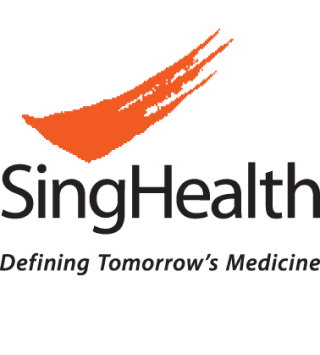National Heart Centre Singapore will NEVER ask you to transfer money over a call. If in doubt, call the 24/7 ScamShield helpline at 1799, or visit the ScamShield website at www.scamshield.gov.sg.
Non-English translations are machine-generated; verify independently for
potential
inaccuracies.
Let us help you find what you're looking for.
Guide for Patients with Coronary Atherosclerosis
Synonym(s):
Coronary atherosclerosis is an accumulation of fatty deposits in the coronary artery wall. As coronary atherosclerosis progresses, this leads to gradual narrowing of the coronary arteries that are responsible for supplying nutrient to the muscle of the heart.
- Aerobic exercises such as brisk walking, jogging or swimming, is the best type of exercise for heart health. Walking is the safest form of exercise to start if you are uncertain of the level of intensity.
- Healthy adults should ideally complete at least 150 minutes a week of moderate intensity exercise (e.g. brisk walk). Seek your doctor’s advice for suitable physical exercise tailored to your condition.
- Inactive adults should start gradually, with light or moderate intensity at a shorter duration (<10 min), with sessions spread throughout the week.
- Get 6 to 8 hours of sleep daily. Inadequate sleep of ≤ 4 hours or excess sleep ≥ 10 hours has been linked with increased risk of coronary artery disease.
- Stop smoking, if you are smoking.
- Smoking contributes to atherosclerosis and increases the risk of heart attack.
- Many stop-smoking aids can improve your chances of success in trying to quit smoking. Speak to your doctor for help in quitting smoking.
- Achieve and maintain a healthy BMI (Body Mass Index). Healthy range for Asians is from 18.5 to 22.9 kg/m2.
- High-fibre diet
- Take at least 2 servings of fruits and 3 servings of vegetables daily (1 serving = 100 grams)
- Choose oats, beans, bran, whole-grain bread, and wheat germ.
- Low glycaemic index (GI)
- Choose low GI foods (brown rice, low sugar soya bean milk, orange) rather than high GI (yellow noodles, orange juice) foods.
- Low GI foods release sugar slowly rather than rapidly, helping to control blood sugar <
- Minimise trans fats
- Limit hard margarine, deep fried food, pastries, cakes and foods made with vegetable shortening, hydrogenated or partially hydrogenated oils.
- Healthier sources of protein
- Choose fish, skinless poultry, lean white meat, nuts, bean products and low-fat dairy products.
- Avoid red meat.
- Limit saturated fats
- Avoid visible fat and animal fats (butter, cream, ghee, lard) and poultry skin
- Limit use of palm oil and coconut oil. Replace coconut milk with low fat/ skimmed milk when cooking curry dishes.
- Choose healthier cooking oils (unsaturated fat) such as sunflower, soya bean, olive, peanut and canola oil.
- Go for healthier snacks
- Take 4 handfuls of nuts (preferably roasted or unsalted types) per week.
- Walnut, almond, pecan, and hazelnut are best for the heart (other nuts such as pistachio, peanut and cashew are fine too).
- Reduce salt intake, especially if you have high blood pressure.
- Limit alcohol intake to not more than 1 glass (wine) or 1 can (beer) a day.
Understanding the Heart (Tips for a Healthy Heart) - Video
What is Coronary Artery Disease? (Video)
Heart Attack: What You Should Know (Video)
YOU CAN DECREASE YOUR RISK OF HEART DISEASE BY 40% ![]()
By simply following 4 simple steps:
- Stop smoking
- Take 2 servings of fruits and 3 servings of vegetables daily
- Achieve and maintain a healthy BMI between 18.5 to 22.9 kg/m2
- Exercise at least 150 minutes a week (moderate intensity exercise)
RECOMMENDATIONS:
- Follow up appointment(s) with your Cardiologist as scheduled.
- For any change of appointment(s), please contact NHCS Appointment Hotline at 6704 2000 or email to central.appt@nhcs.com.sg. You may also manage your appointment(s) on-line via SingHealth Health Buddy App.
- If you would like to learn more about how to prevent heart disease, you can request for your doctor to refer you to our NHCS Cardiac Physiotherapy and Rehabilitation Services.
The content provided is for general information only and is not a substitute for professional medical advice of your healthcare professionals.
For our coronary atherosclerosis guide in Mandarin, click here.
Keep Healthy With
5 Hospital Drive, Singapore 169609
© 2025 SingHealth Group. All Rights Reserved.
















